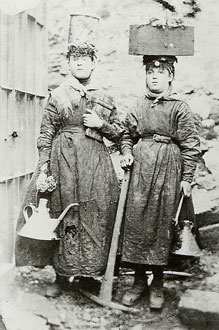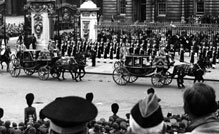
Family snapshots, posed photos, cine film and even home videos provide a wealth of primary source material for historians. In recent years a number of important TV documentaries have drawn heavily upon amateur film and photographic archives. Among these are The British Empire in Colour (Carlton), Britain at War in Colour (Carlton) and Ken Burns’ magnificent trilogy The West, The American Civil War and Jazz. Now educational projects of many sorts, in schools, colleges, local history societies, evening classes and universities are discovering new material and making it available in digital format via the Internet or on DVD. But as with all types of primary historical source material, the evidence does not “speak for itself”. It requires historical interpretation in order to reveal its meaning and significance. This article outlines a method for analysing film and photography as a primary source and discusses some of the problems encountered by the social historian.
What Is A Primary Source?
Studying history is really the process of interpreting the past. Primary sources are the raw material historians draw upon in their investigations. They are direct evidence of the past. As such they differ from secondary sources (books, articles, radio and TV programmes or unpublished theses written or presented by historians) in that they actually come from the period under investigation. A primary source may often be an item or printed source produced in the period being studied; but it could just as well be a photograph or reel of film shot at the time. Our primary source may have been restored, reproduced or reprinted, but it remains a primary source nonetheless. An example of this is the photograph of Tredegar patch girls reproduced in Angela V. John’s By the Sweat of Their Brows. Women Workers at the Victorian Coal Mines.

Tredegar patch girls in the 1860s, courtesy of Manchester City Gallery. One of forty-nine such photographs. Written on the back of each was ‘Copies may be had at any time’.

Why We Need Secondary Sources
What we can learn about a historical period or topic from a single primary source such as the photograph of the women coal miners is really quite limited. Firstly, this photograph is evidence that women worked in the mines of South Wales in the 1860s. From it we might describe their clothing, physical stature and expressions; as well as noting indications of the conditions of work from the types of tools and implements they carry. But to say much more about the photograph, and begin to understand its significance, we must turn to secondary sources. We need to know about the mining industry where and when the picture was taken. A broader social, political, economic and cultural context is necessary if we want to use the photograph to illustrate or back-up statements about the lives of women workers in this industry. Secondary sources are therefore essential for background information and to tell us what other historians know about the subject. They will enable us to place our photograph in its wider historical context and help us to ask the right questions about our source. Secondary sources also alert us to other evidence that we may need to consult.
Beware Of Primary Sources!
Primary sources need to be treated with caution because they were created for the purposes of their producers, and not necessarily with an eye to accuracy or truthfulness. They contain several layers of evidence and need to be analysed, evaluated and interpreted with this in mind. Arthur Marwick, a former professor of history at the Open University, suggests that primary sources contain both intentional and unintentional evidence. In our example there is the deliberate message conveyed by the photograph – the pose, demeanour and expression of the women. Then there is the unintended information it conveys about the contemporary interest in women workers. We are told this is one of forty-nine studio photographs of Welsh patch girls and that this was a commercial undertaking, with copies readily available for collectors. But in order to learn more about why the photograph was taken, who the buyers were and some of the reasons to doubt that these images are wholly accurate depictions of such workers, we need to look at Angela V. John’s discussion in her book. So we must maintain a critical view of the evidence and begin from the assumption that it may well not be a true reflection of reality.

Questions To Ask Of Primary Sources
When using film or photographic sources, or any other sort of primary evidence, we need to ask a number of questions. Here is a checklist:
What type of source is it? We need to be clear about the media used (photograph, cine film, newsreel, video or other source); whether it is a copy or taken from the original negative; and any technical information such as gauge of film stock (8 mm, 16 mm or 35 mm), whether colour, black and white or tinted, and so on.
When was it created? Dating our source is of crucial importance when it comes to interpretation and looking for secondary source information.
Who was it produced by? While it may not always be possible to put a name to the photographer or cinematographer, it should be possible to find some information about the creator. Studio photographs are usually labelled. Photographs from private individuals may have information on the reverse and there may be information about commercial film processors on packaging, film containers etc.
Why was it created? Answering this question is likely to involve interpretation of motives and purposes. Clearly the source conveys an intentional message on the part of the creator and/or the subjects. So we might ask to whom this message was addressed and for what purpose. In the case of our patch girls, John tells us that these were commercial photographs of working women who were seen as curious objects at the time. Many were sold as postcards and some to collectors.
We need to be aware that with many types of source, including photographs and film, there is always the chance that they have been modified or altered in some way. For instance, many photographs taken of revolutionary leaders in early Soviet Russia were “doctored” during the Stalinist era to remove figures who had fallen out of favour or been liquidated.
What does the source reveal in unintentional testimony? Here we are again engaged in interpreting the views and values of the creator of the source and, possibly, those of the subjects. In our example the fact that women in the coal industry were such curiosities that photographers sought them out as subjects and customers purchased the images, says something about attitudes to women and work in the mid-Victorian era. The photograph intentionally shows the dignity and pride of the women, and the large pickaxe and the equipment they carry accentuate their small stature and strength. John argues that the photographer deliberately exaggerated certain features in order to increase the curiosity of the scene. At the time, there was a major debate over whether it was right for women to undertake dangerous heavy manual work more usually associated with men. For many middle class commentators this type of work destroyed the women’s feminine attributes. Such images may have depicted the physical strength and pride of women pit workers, yet this attitude transgressed contemporary ideas about how women ought to behave. As John puts it:
‘Pictorial representations thus provided ammunition for the debate about the disturbing physical and moral implications of the work.’ (John, 1984, p 187)
What is the wider historical significance of the source? Unintentional testimony often leads to a discussion of broader historical issues. In the case of the photograph of the two patch workers we are taken into the field of mid-Victorian social attitudes towards women and work. Here we have hard evidence that it was not only men who performed heavy, dangerous and dirty industrial manual labour in the Victorian coal mining industry. Moreover, as Angela V. John has shown, in the 1880s and again just before the First World War, women pit brow workers struggled to defend the legal right to perform this work in the face of vigorous campaigns to exclude them. This struggle connected one of the lowest status and most oppressed groups of women with the broader struggles for women’s political, social and economic rights. In recovering the largely overlooked and poorly documented history of the “pit lasses”, John makes exemplary use of photographic primary sources precisely because she does not assume the pictorial evidence “speaks for itself”.

Summary
Finding information about the past in primary sources involves interpretation. It means asking a series of questions about the film, photograph or video being used. Answering many of these questions will require reference to secondary sources. At all stages of the process it is important to maintain a critical distance from the primary source and not assume the meaning or truthfulness of the item is self-evident. There is almost always a more complex story behind the evidence which it is the historian’s task to uncover.
References
- Angela V. John By the Sweat of Their Brows. Women Workers at Victorian Coal Mines, RKP, London 1984
- Arthur Marwick The New Nature of History: Knowledge, Evidence, Language, Palgrave Macmillan, 2001
Approaches to historical study
- Arthur Marwick, ‘The Fundamentals of History’
Use of Primary Sources
- The Library Of Congress: What Are Primary Sources?
- Saratoga High School: Analysis of Primary Sources
- The University of Auckland Library: Historical Primary Sources - A Guide
- University of Washington Libraries: Primary Sources
- Western Libraries: Primary Source Research
Film History:
- Academic Info: Film History [Contains links to many journals and other online resources]
- Online library catalogue for the University of Berkeley
- World Wide Web Virtual Library: Film History Index
- Digital History: Hollywood's America
Photography and history:
- Robert Leggat's Home Page: A History of Photography
- Midley History of Photography: R. Derek Wood’s articles on the early History of Photography, the Daguerreotype and Diorama
- Dictionary of Victorian London: Social History
- Hidden Lives Revealed: Children in Care 1881-1918 An interesting site that uses photography to illustrate a social history of the late Victorian and Edwardian Britain.
Read more articles on films

Rate and Review
Rate this article
Review this article
Log into OpenLearn to leave reviews and join in the conversation.
Article reviews